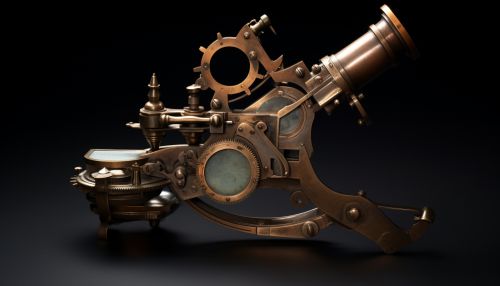Celestial Navigation
Introduction
Celestial navigation, also known as astronavigation, is a method of navigation used by mariners and aviators to determine their position on earth by observing celestial bodies. This technique involves the use of a sextant, a specialized instrument that measures the angle between a celestial body and the horizon. The data obtained is then used to calculate the observer's position on earth.


History
The history of celestial navigation dates back to ancient times when sailors used the stars to navigate the seas. The ancient Egyptians were among the first to use this method of navigation, using the North Star (Polaris) to guide their voyages. The ancient Greeks also made significant contributions to celestial navigation, with the astronomer Hipparchus developing the concept of latitude and longitude.
Celestial navigation is based on the principle of the celestial sphere, an imaginary sphere with the earth at its center. The celestial sphere is divided into 360 degrees, with each degree representing a specific location on earth. The position of a celestial body on the celestial sphere is determined by its altitude and azimuth.
Altitude
The altitude of a celestial body is the angle between the body and the observer's horizon. It is measured using a sextant. The altitude is used to determine the observer's latitude.
Azimuth
The azimuth of a celestial body is the angle between the body and the observer's meridian, a line running from the North Pole to the South Pole. The azimuth is used to determine the observer's longitude.
Several tools are used in celestial navigation, including a sextant, a chronometer, and a nautical almanac.
Sextant
A sextant is a handheld instrument used to measure the angle between a celestial body and the horizon. The sextant has a small telescope for sighting the celestial body and a graduated arc for measuring the angle.
Chronometer
A chronometer is a highly accurate timepiece used to determine the time of a celestial observation. The time of the observation is used in conjunction with the altitude and azimuth to calculate the observer's position.
Nautical Almanac
A nautical almanac is a publication that provides the predicted positions of celestial bodies at specific times. The data in the almanac is used in conjunction with the observations made with the sextant and chronometer to calculate the observer's position.
Calculating Position
The process of calculating one's position using celestial navigation involves several steps. First, the observer uses the sextant to measure the altitude of a celestial body. The time of the observation is recorded using the chronometer. The observer then uses the nautical almanac to find the predicted position of the celestial body at the time of the observation. The observer's position is then calculated using the observed altitude, the predicted position of the celestial body, and the time of the observation.
Despite the advent of modern navigation technologies such as GPS, celestial navigation is still used today, particularly in the maritime and aviation industries. It serves as a reliable backup method of navigation in case of failure of electronic navigation systems.
